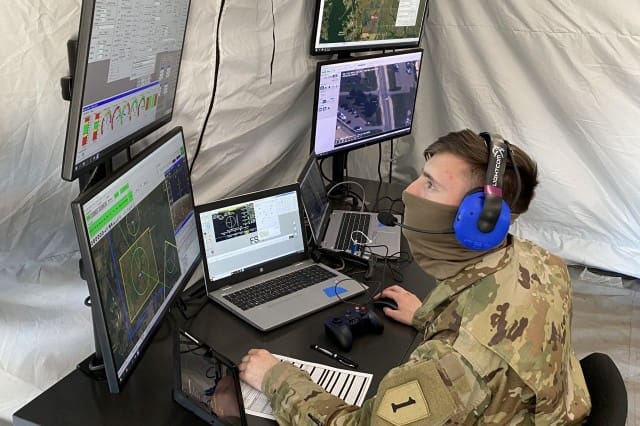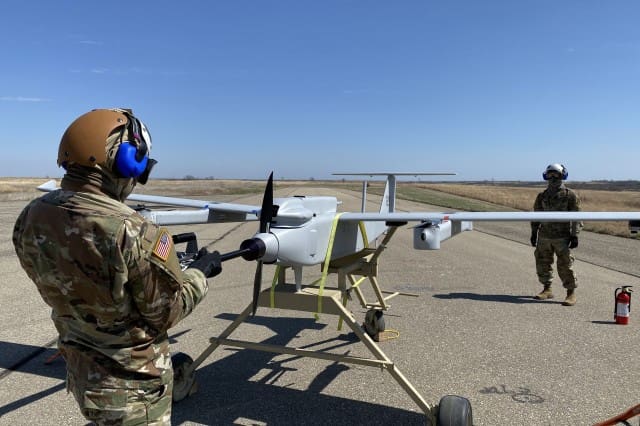WASHINGTON — Signature modernization programs remain on track to deliver capabilities to Soldiers, despite facing delays due to the coronavirus, Army leaders said Thursday.
Some of the more than 30 programs have already postponed tests, including Soldier-input events, as a result of safety concerns and supply chain challenges.

The service, though, plans to make up for lost time to stay on schedule, said Gen. John M. Murray, commander of Army Futures Command.
“What I believe is the most important thing is when we promised our Soldiers we would deliver that capability,” he said during a press briefing. “The current estimate is we will deliver the capability by the time we said we would deliver that capability to our Soldiers, which is first unit equipped.”
Soldier touchpoints, which have allowed Soldiers to play a critical role in the development of new equipment, have varied depending on the location of the event.
The 1st Infantry Division’s 1st Armored Brigade Combat Team is now conducting Soldier touchpoints at Fort Riley, Kansas, for the Future Tactical Unmanned Aerial System capability demonstration.
In order to do this, Soldiers are wearing personal protective equipment along with practicing social distancing and good hygiene, Murray said.
The demonstration consists of five brigades across the country that will test technology that may lead to a replacement for the RQ-7 Shadow.

Later this month, the 101st Airborne Division’s 2nd Brigade Combat Team at Fort Campbell, Kentucky, is also slated to begin its touchpoints for the demonstration after a slight delay, he said, adding these events depend on local conditions.
“We consult, but ultimately we will defer to the local commander on the ground to make those types of decisions about the health of the force and what they can and cannot do,” he said.
The pandemic has led the Army to postpone similar events, particularly for the Integrated Visual Augmentation System, a heads-up display designed to increase situational awareness in combat and for training.
The device’s third iteration for Soldier input is a critical one since it will be the first time they will test hundreds of sets of the military form factor, a ruggedized version with integrated low light and thermal sensors.
While the tests had been scheduled for this summer, they were postponed to the fall after manufacturing delays, Murray said.
A subcontractor for Microsoft, which received the contract, should be operational again this week or early next week, he said.
“We have plans in place to make that time up and maintain first unit equipped like we promised all along,” he added.
Bruce D. Jette, assistant Army secretary for acquisition, logistics and technology, explained that companies may have to shut down for a 14-day quarantine if a worker tests positive for the virus.
BAE Systems, for example, had to briefly halt operations at their plant in York, Pennsylvania.
“You can’t do assembly of armored vehicles by telephone or computer; you’ve got to have welders and people in there and sometimes they’re in close proximity to each other,” he said. “They went back and rescrubbed their entire procedures and they took care of their people, as we encourage them [to do].”
Boeing also had to temporarily close a plant in Philadelphia until it was safe to reopen.
“Right now, all of the companies that were closed for any period of time have reopened,” Jette said.
Each priority program, Murray said, affords a bit of wiggle room for unforeseen circumstances, which the Army will now be able to use to meet timelines.
In “every individual program, there are little places where we’re massaging and working to make back time,” the general said. “We’re not really cutting anything out. We’re just moving faster than we originally planned to go from prototype delivery into the hands of Soldiers.”
An example is with the Next-Generation Squad Weapon, which currently faces a six-week delay for three vendors to deliver prototypes. Once they get delivered, the Army plans to speed up the time it takes to get them out to units for testing.
“We will get weapons into the hands of Soldiers, under current conditions, two weeks after we take delivery of the prototypes,” Murray said. “That used to be a longer process. We’ll get four of those six weeks back right away by accelerating the time.”
Army Secretary Ryan D. McCarthy said the Army was grateful for how resilient industry has been to keep programs moving.
“It’s amazing how quickly they’ve adapted, kept their workforce engaged and are protecting cost schedule and performance on these weapons systems,” he said at the briefing.
He also credited Army modernization and acquisition officials in working progress payments for manufacturers, helping with small business loans, and managing second- and third-tier suppliers.
“We’ve been very supportive of our industry base and their supply chains to ensure that they continue to go down the path of recapitalizing existing weapons systems, as well as the development of the new ones,” he said.
By Sean Kimmons, Army News Service

